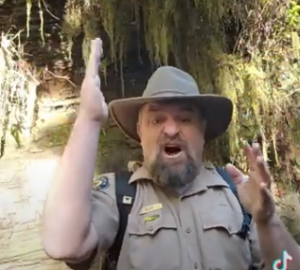Redwoods restoration can integrate climate adaptation into economic recovery

As Governor Newsom and California’s lawmakers grapple with how best to mitigate impacts of COVID-19 on our lives, health and the economy, the people of our state have voted with their feet. Californians have flocked to parks, forests, beaches and even closed city streets to seek the healing power of nature during the statewide shelter-in-place order.
Beyond being critical to public health, it turns out that nature can also heal our economic challenges—if we’re willing to make the investment.
Launching the Civilian Conservation Corps in 1933 created New Deal jobs and long-lasting natural resource benefits that endure today. Now we have an opportunity to make a serious investment in a new green workforce that can create immediate-term jobs and address the longer-term imperative of building wildfire readiness, climate resilience and healthy communities.
California’s conservation sector has thousands of shovel-ready land projects ready to go today. In the Bay Area alone, a new report from TOGETHER Bay Area—a regional coalition of public agencies, Indigenous Tribes, and nonprofits working for lands, people and communities— estimates that at least 10,500 jobs would be generated by advancing the coalition’s 620 projects over the next 12-18 months.
In economically vulnerable rural communities from Humboldt and Del Norte Counties to Tulare County, long-term projects to protect and restore California’s coast redwood and giant sequoia forests need thousands of skilled workers to restore these landscapes for wildfire readiness and climate resilience.
Integrating climate adaptation with economic development is critical. A recent global Ipsos poll shows that 57% in the U.S. support government actions that prioritize climate change in the context of economic recovery. California is uniquely positioned to deliver through the conservation of redwood forests, our unique and powerful allies in the fight against climate change.
According to new redwoods and climate change research at Humboldt State University, recovering redwood forests that were clear-cut 150 years ago have already stored more carbon than almost any forest ever measured. This carries massive potential across the 1.5 million acres of young redwood forests in California—if we build a workforce to accelerate their recovery through large-scale landscape restoration.
We also need a green workforce of skilled workers to maintain and enhance our parks and public lands. During the pandemic, visitation to some Bay Area parks has increased by as much as 400% compared to this time last year, according to the TOGETHER Bay Area report. It is clear we need more land for more parks to ensure access for all Californians. Save the Redwoods League is just beginning to address this demand by creating new coast redwood and giant sequoia destinations in Sonoma County and the western slopes of the Sierra, in partnership with marginalized groups, local tribes and community members.
Californians, our economy and nature itself will benefit from prioritizing investment in restoring our natural resources, publicly accessible parks and working lands.
The fate of California’s future economic and public health will be largely determined over the coming weeks and months. We call upon the Governor, his Economic Recovery Task Force and State Legislature to invest deeply in a green workforce with funding for wildfire readiness, parks and landscape restoration projects that are critical to the economic present and environmental future of California.
Here in California, we are uniquely blessed with abundant natural resources. Let’s put them to work for us by putting ourselves to work for them. Let’s make sure we see both the forest and the trees in the solutions before us.









One Response to “Put Californians back to work through conservation”
Christa Lyons
Sam, I thought your article about the connection between conservation and jobs is excellent. I kept hoping someone would express that the way you did. In these difficult economic times that is super important.